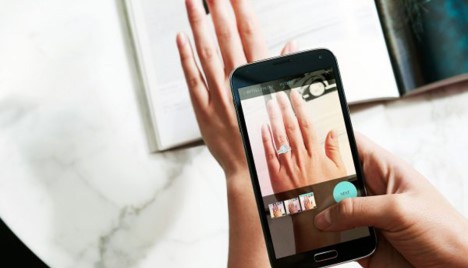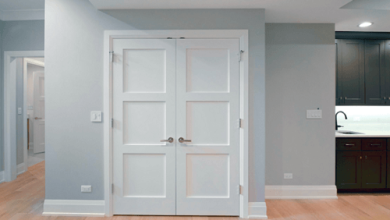How Augmented Reality Jewelry Try On Boosts Sales of Jewelry Business

Augmented reality (AR) is a technology that integrates computer-generated elements into the real-world environment. However, it is not really new.
The very first AR prototypes were created in the 1960s by Ivan Sutherland, also known as the father of computer graphics. He is believed to be the founder of both augmented and virtual reality. Together with his students, he constructed the very first AR head-mounted display, which was called the Sword of Damocles. It got its nickname due to its heavy weight and the need to be suspended from the ceiling. This is when AR started to transform from science fiction into reality.
Right now, AR is the pandemic-driven innovation, which is getting deeper and deeper in various industries, ranging from manufacturing and education to healthcare and beauty. Since 2020, it has also started to change people’s shopping experience, as more and more brands were trying to show their utmost flexibility and satisfy their consumers’ most sophisticated needs during the pandemic times. That was when the need for online shopping drastically increased and the only way out for companies was to start using some innovation not to lose their clients.
Luckily, to make the integration of AR into your company’s product smoother, there exist ready-made solutions that will help you level up your business and showcase your brand in the best possible light. And here also, Banuba has something to offer. Its Virtual Jewelry Try-On Solution includes precise face and hand tracking, realistic representation of jewelry items, accurate jewelry placement, and real-time motion simulation. No wonder such brands as Gucci, Samsung, Smilegate, and Voicemod are on the extensive list of their clients.
As for the jewelry business, it was not common for people to buy jewelry online. Its high price and the inability to see how the jewelry piece would look in real life made many people bewildered initially. So, jewelry brands resorted to AR Jewelry Try-Ons to calm their consumers down and make their online shopping experience less stressful.
AR Jewelry Try-On: What Is It Like and How It Works
The AR Jewelry Try-On is the technology that allows people to try on different jewelry pieces (like earrings, necklaces, bracelets, rings, etc.) from the comfort of their home. A person simply needs to open the camera on their device and let AR do the rest of the job. The augmented reality technology will scan the visual in front of it, making the virtual jewelry item automatically appear where necessary. This way, buyers can see whether the piece of jewelry suits them or not.
Benefits AR Jewelry Try-Ons Bring to Jewelry Business
- Jewelry Visualization
As mentioned above, people were hesitant to purchase jewelry online, as it was like playing a guessing game. Luckily, AR Try-Ons has made it possible to try on virtual jewelry replicas without having actual physical items at hand. This may be particularly helpful when a person looks for jewelry pieces to match some other previously purchased items. This way, customers have a chance to visualize the jewelry size, shape, color, and the way it looks from different angles, which definitely improves the customers’ product discovery experience.
- Reduced Product Returns
This benefit logically comes from the previous one. The more clients are confident in their online purchases, the fewer product returns your company is likely to face. When expectation fully coincides with reality, there is no need to resort to the return procedure.
- Increased Conversion Rates
Several research has shown that people are more willing to pay for the products that AR tools offer. The reason is that these tools allow consumers to get more information about the product and see its every single detail, like the play of light in a ring’s gemstone. It only proves that augmented reality is not desired but already expected by millions of consumers.
All the benefits mentioned above may seem to be true only when it comes to the online sector. However, it is not really so. Even in real stores, this emerging technology can fill certain gaps, showing a new facet of shopping experience. For example, about 10 years ago, Tissot, a world-know Swiss watchmaker, added the AR spark to window shopping. Shoppers wore a paper band on their wrist, showed it to the display camera, and saw themselves on the window screen wearing the chosen watch on their arm. They could change the watch using the interactive touch screen.
This is how Tissot managed to grab the headlines, trigger good word-of-mouth promotion, increase their brand’s popularity even more, and boost their sales as a result. That is a bright example of how AR tools can increase a company’s revenue. So, if this technology is in the right hands, the money invested in it will return to you two-fold in the future.
As one of the options, you can explore the products of the Banuba company.









